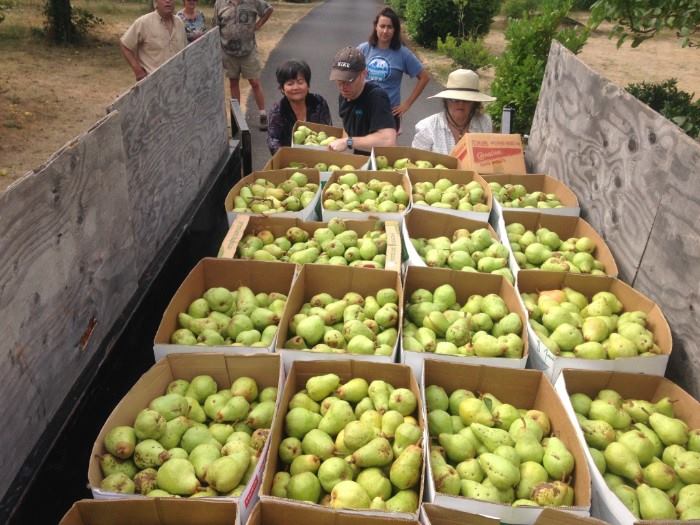How Can We Help?
Fruit Tree Maintenance: “When to Prune?” at Urban Abundance

Fruit Tree Maintenance: When to Prune?
Proper pruning is arguably the most critical element of fruit tree maintenance with the greatest ‘bang for your buck’ in promoting tree health and fruit quality. Selective pruning can be used to alter the size and form of a tree, to remove dead, diseased or damaged tissue, to create better access for maintenance and harvesting, and to improve air flow and light infiltration in the canopy. Late summer and/or deep winter pruning are typically recommended, but pruning can be done any time of year, if necessary. Consider the following:
Year-Round: Dead, diseased and damaged wood can (and ought to) be pruned out at any time. This will help prevent the spread of disease and decay in the tree and keep it looking healthy and beautiful! If an orchard has been neglected or improperly pruned, a work party can be organized specifically to address the “Three Ds.”
Winter: Pruning while the tree is bare is helpful because it allows the pruner to step back and see the full “architecture” of the tree and to access the canopy without a bunch of leaves in their face. While the tree is dormant, its energy reserves are stored in the roots, so pruning at this time can stimulate, rather than inhibit, vigorous growth in the spring. This is great for small, accessible trees whose form and structure are well under control.
(Late) Summer: This is a great time to prune because it’s easy to spot dead/diseased/damaged branches among the rest of the green, healthy growth. Branches may have broken or bowed into an unsuitable position while laden with fruit. Pruning before the tree goes dormant will be more of a “hit” to the tree’s energy reserves, and can result in more modest spring growth. This is a great way to thin out/reduce trees that are messy and overgrown.
Spring/Early Summer: Removing leafy branches reduces the tree’s ability to photosynthesize, meaning less energy available for producing flowers and fruit. Flowers and fruitlets can get knocked off while removing branches during pruning. If this is the only time available to prune, though, so be it. It may result in a smaller harvest or less growth next spring, but the tree will be better off in the long run.
NOTE: Newly planted trees should be allowed a few years to establish and develop a strong root system before pruning. No more than 30% of the canopy should be removed during a given year to allow the tree to continue to photosynthesize and recover from the pruning session. Pruning should be carried out and/or supervised by a person with knowledge of tree anatomy and proper pruning technique.


